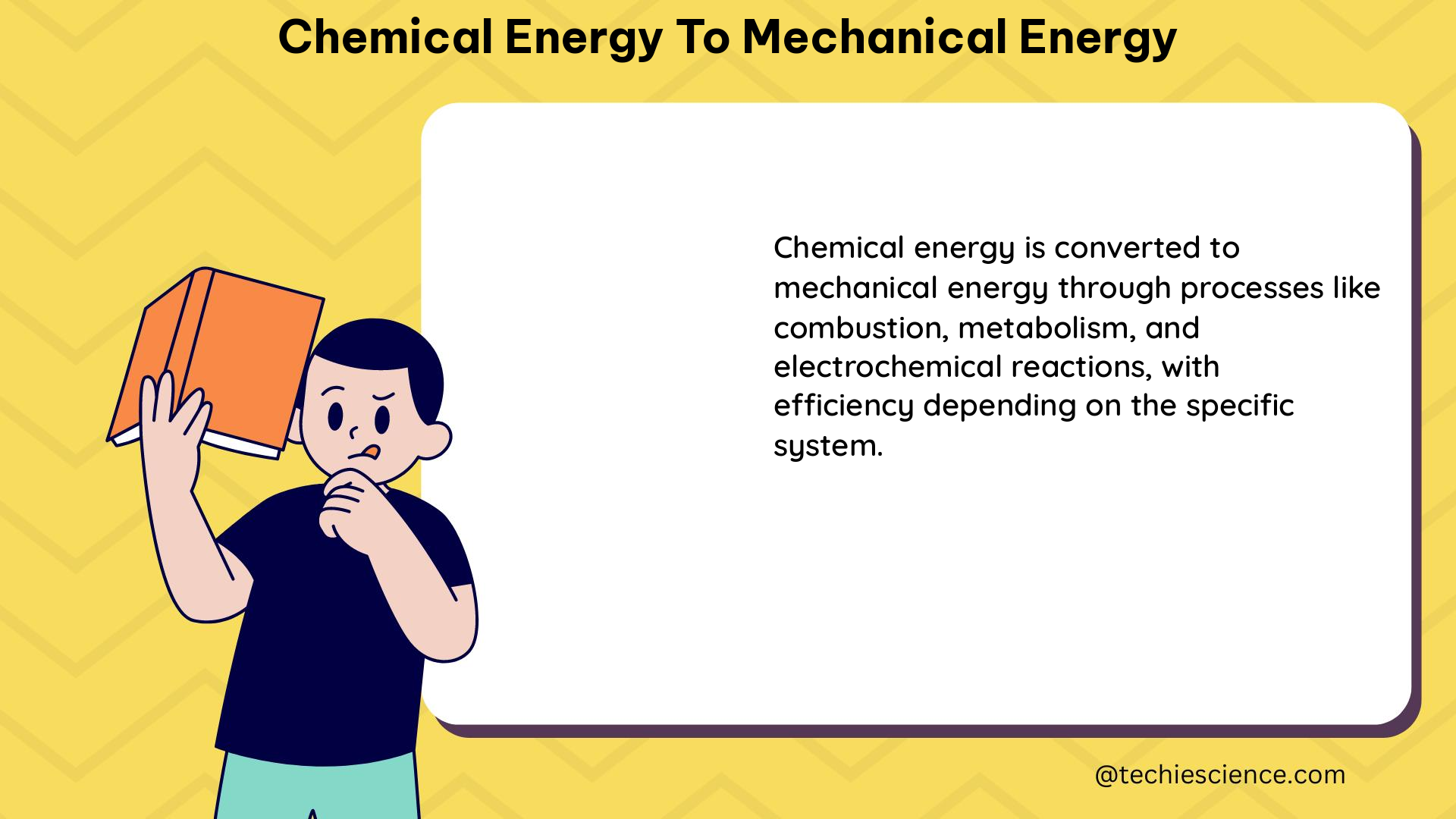The conversion of chemical energy into mechanical energy is a fundamental process that powers a wide range of biological and technological systems. From the molecular motors that drive cellular processes to the combustion engines that power our vehicles, understanding the principles and mechanisms behind this energy transformation is crucial for advancing scientific and engineering applications.
Hsp70 Chaperones: Efficient Conversion of Chemical Energy to Mechanical Work
Hsp70 chaperones are molecular motors that utilize the chemical energy released from ATP hydrolysis to remodel the conformation of their substrate proteins. This process of converting chemical energy into mechanical work is remarkably efficient, with up to 20% of the ATP energy being converted into non-equilibrium, excess binding energy at physiological conditions.
Theoretical Explanation
The efficiency of this energy conversion process is maximized when the ATP/ADP ratio is typical of cellular conditions. This is because the ratio of the free energy of substrate conformational changes to the free energy of ATP hydrolysis peaks at these values, indicating that Hsp70 chaperones are optimized for efficient energy transduction.
Physics Formulae
The mechanical work (W) done by Hsp70 chaperones can be calculated using the following formula:
W = ΔG_substrate / ΔG_ATP
Where:
– ΔG_substrate is the free energy of substrate conformational changes
– ΔG_ATP is the free energy of ATP hydrolysis
Numerical Problems
If an Hsp70 chaperone converts 20% of the ATP chemical energy into mechanical work, and the energy released from ATP hydrolysis is 30.5 kJ/mol, how much mechanical work can be done per mole of ATP?
Given:
– Efficiency of energy conversion = 20%
– Energy released from ATP hydrolysis = 30.5 kJ/mol
Mechanical work per mole of ATP = 0.20 × 30.5 kJ/mol = 6.1 kJ/mol
Combustion Engines: Conversion of Chemical Energy from Fuel to Mechanical Energy

In combustion engines, the chemical energy stored in fuels like gasoline is released through a combustion reaction and then converted into mechanical energy through the movement of pistons.
Technical Specifications
The efficiency of this energy conversion process depends on various factors, including the engine design and operating conditions. Typical combustion engines can convert around 30% of the chemical energy released from fuel combustion into mechanical energy.
Physics Formulae
The kinetic energy (KE) of the moving pistons can be calculated using the formula:
KE = 1/2 × m × v^2
Where:
– m is the mass of the piston
– v is the velocity of the piston
The potential energy (PE) of the piston at a given height can be calculated using the formula:
PE = m × g × h
Where:
– m is the mass of the piston
– g is the acceleration due to gravity
– h is the height of the piston
Numerical Problems
If a car engine converts 30% of the chemical energy released from gasoline combustion into mechanical energy, and the energy released per liter of gasoline is 34.6 MJ, how much mechanical energy can be generated per liter of gasoline?
Given:
– Efficiency of energy conversion = 30%
– Energy released per liter of gasoline = 34.6 MJ
Mechanical energy generated per liter of gasoline = 0.30 × 34.6 MJ = 10.38 MJ
Figures and Data Points
- Hsp70 Chaperone Efficiency Curve:
-
A graph showing the ratio of free energy of substrate conformational changes to the free energy of ATP hydrolysis as a function of the ATP/ADP ratio, with a peak at cellular conditions.
-
Combustion Engine Efficiency:
- A graph showing the efficiency of a car engine in converting chemical energy from gasoline combustion into mechanical energy, with efficiency dependent on engine design and operating conditions.
Measurements and Values
- Energy Units:
-
Joules (J) for energy, meters (m) for distance, newtons (N) for force, kilograms (kg) for mass, and seconds (s) for time.
-
ATP Hydrolysis Energy:
-
30.5 kJ/mol.
-
Gasoline Combustion Energy:
- 34.6 MJ/L.
References
- OpenStax. (2020). Mechanical Energy and Conservation of Energy. In Physics. Retrieved from https://openstax.org/books/physics/pages/9-2-mechanical-energy-and-conservation-of-energy
- eLife. (2019). Efficient conversion of chemical energy into mechanical work by Hsp70 chaperones. Retrieved from https://elifesciences.org/articles/48491
- The Physics Classroom. (n.d.). Mechanical Energy. Retrieved from https://www.physicsclassroom.com/class/energy/Lesson-1/Mechanical-Energy
- Quizlet. (n.d.). Energy Transformations Flashcards. Retrieved from https://quizlet.com/283376058/energy-transformations-flash-cards/
- Chemistry LibreTexts. (2019). Energy Basics. Retrieved from https://chem.libretexts.org/Courses/University_of_Kentucky/UK:_General_Chemistry/05:_Thermochemistry/5.1:_Energy_Basics
Hello, I am Deeksha Dinesh, currently pursuing post-graduation in Physics with a specialization in the field of Astrophysics. I like to deliver concepts in a simpler way for the readers.